Great Design Plant: Simmondsia Chinensis
This Southwestern native shrub is a great choice for those who want a low-maintenance desert plant that looks good growing next to cacti or flowering perennials and can even function as an informal hedge. Jojoba (Simmondsia chinensis) is known for evergreen foliage and its ability to thrive in full sun, as well as its need for infrequent irrigation. In fact, it prefers locations with hot, reflected heat.
While not a particularly showy shrub, it is versatile in the landscape; that, coupled with the ability to provide year-round green color, makes it a nice choice for the arid garden. Jojoba is naturally a slow grower; you can increase its growth rate with more regular watering. You’ve probably heard that jojoba is used in a variety of cosmetics; that is the extract from the fruit produced by the female plant.
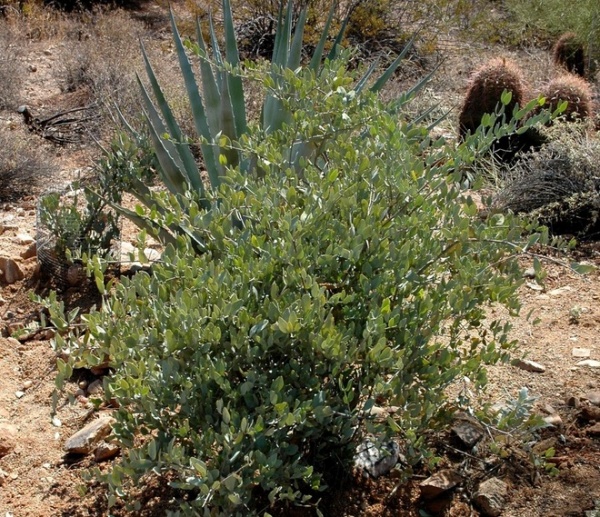
Botanical name: Simmondsia chinensis
Common names: Jojoba, goat nut
Origin: Native to the southern regions of Arizona and California as well as Baja and Sonora, Mexico
Where it will grow: Hardy to 15 degrees Fahrenheit (USDA zone 8; find your zone)
Water requirement: Drought tolerant once established, but does best when watered deeply every two weeks in summer and once a month in spring and fall; water only in the winter in the absence of rain
Light requirement: Full sun is best but can tolerate some light shade
Mature size: 6 feet tall and 10 feet wide, but can be maintained at a smaller size if desired
Benefits and tolerances: Drought tolerant
Seasonal interest: Attractive foliage year-round
When to plant: Fall through spring
Shown: Young jojoba
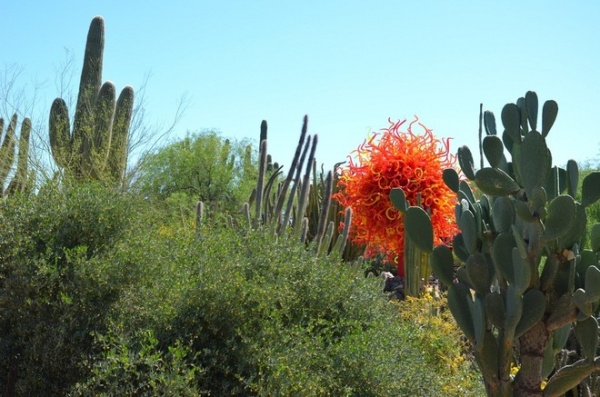
Distinguishing traits. Jojoba’s leathery, gray-green leaves, with their waxy coating, help the plant survive in hot, dry climates. The coating reduces the amount of water lost to the atmosphere, allowing jojoba to thrive with only periodic deep watering.
While most desert shrubs are rather wispy, jojoba is denser in appearance. It can be grown as a very large shrub or kept to a more modest size by infrequent pruning.
Male and female flowers are borne on separate shrubs. The small flowers are rather nondescript and are yellow-green. The flowers from the female plant produce a small brown fruit, about an inch long, from which a waxy substance is extracted and used for a variety of cosmetic products.
Shown: A large jojoba shrub in the Desert Botanical Garden’s Chihuly exhibit, in Phoenix
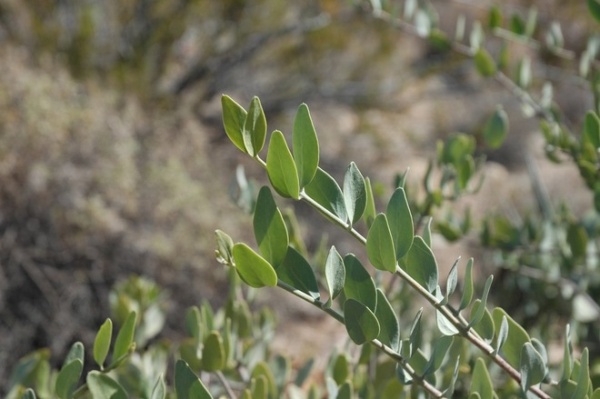
When allowed to reach their natural size, jojoba plants are perhaps one of the most low maintenance in the desert palette. They don’t require any pruning when given enough room to grow (at least 8 to 10 feet), and they have an attractive, natural branching pattern. Even if you keep them smaller, they need to be pruned only once a year in summer because they grow so slowly.
Jojoba’s leaves are arranged vertically along branches, which helps it avoid direct sunlight; this is another feature that allows them to grow in locations with hot, reflected heat.
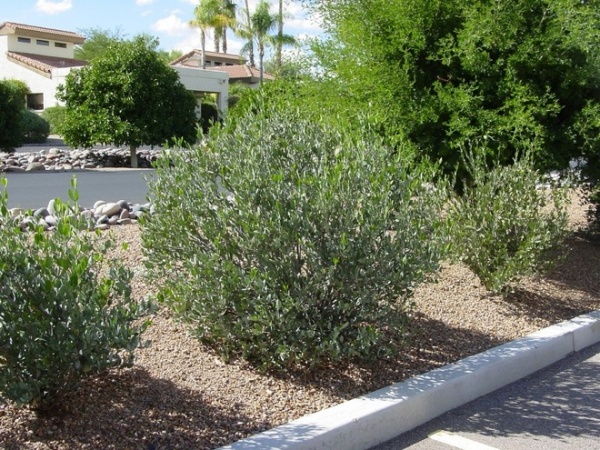
How to use it. When allowed to grow as a large shrub, jojoba provides a great backdrop in large spaces and holds its own next to large cacti species, such as saguaro (Carnegiea gigantea) and organ pipe cactus (Stenocereus thurberi). Because of its big size, jojoba makes a great screening plant.
This versatile shrub can also be maintained in a smaller form, in which it can be used to line a walkway as an informal hedge that needs pruning only once a year. Jojoba is also a great choice for a foundation planting.
For a natural, low-maintenance desert landscape, pair jojoba with more colorful plants, such as brittlebush (Encelia farinosa), damianita (Chrysactinia mexicana), firecracker penstemon (Penstemon eatonii), red yucca (Hesperaloe parviflora) and Santa Rita prickly pear (Opuntia santa-rita) — all of which need little to no maintenance. Pair it with gray-leaved agave species, such as whale’s tongue agave (Agave ovatifolia) or Agave harvardiana, for great color and textural contrast.
Shown: Jojoba that is pruned annually to form an informal hedge
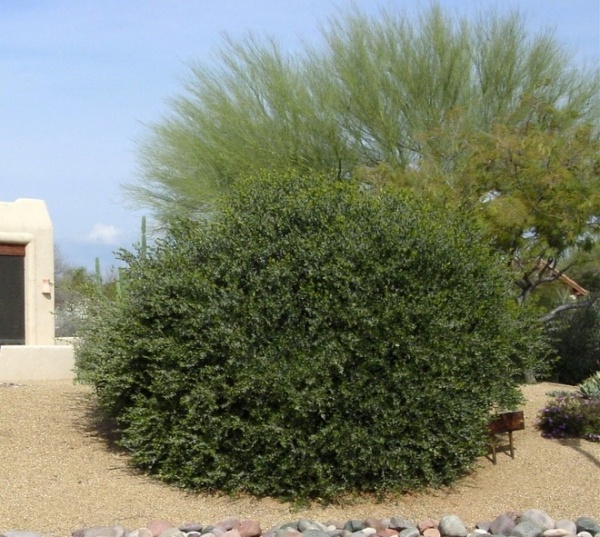
Planting notes. Jojoba does best in full, reflected sun but can also grow in light, filtered shade, although branching will be less dense. Plant it in well-drained soil in a hole that is three times as wide as the root ball and slightly shallower. No fertilizer is needed.
Shown: Jojoba shrub allowed to grow to its natural, large size
More:
Browse plants native to other regions of the U.S.
How to Spot a Drought-Tolerant Plant












